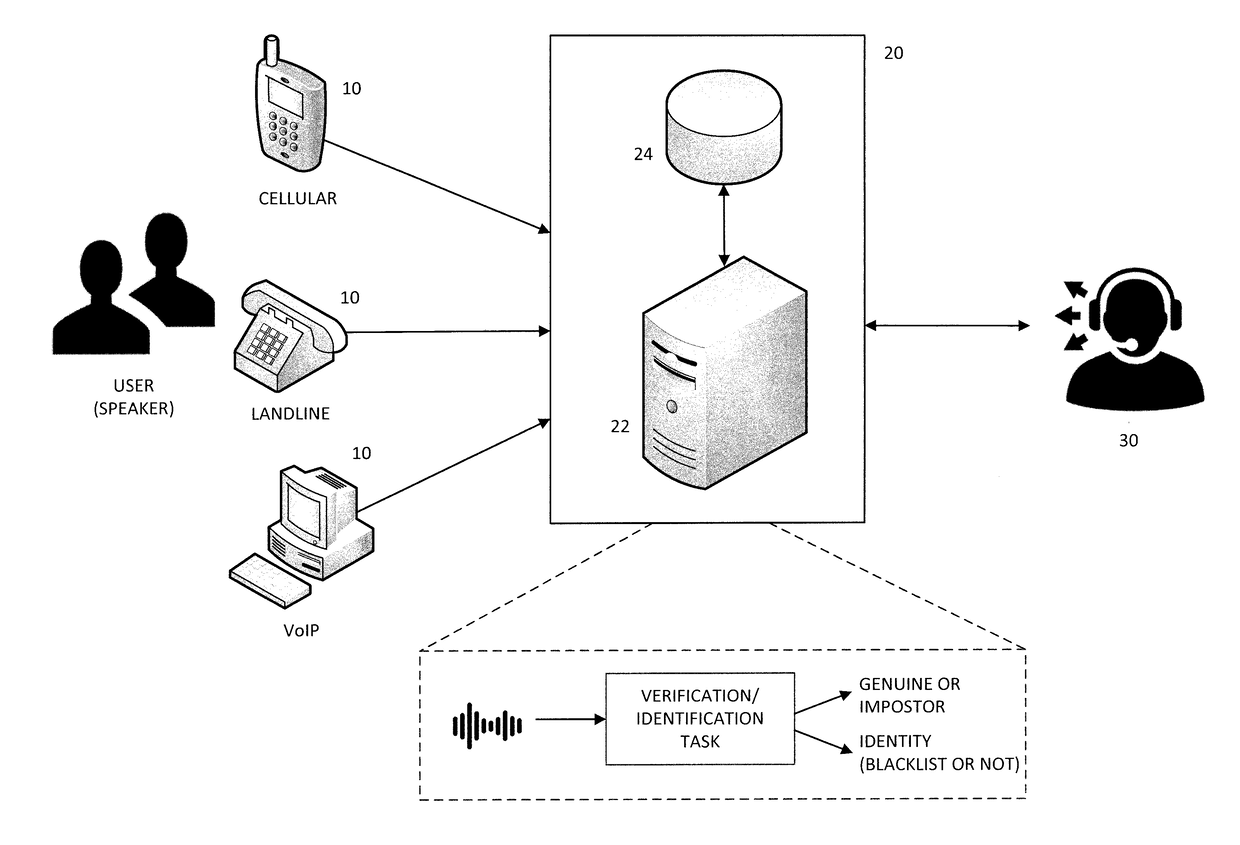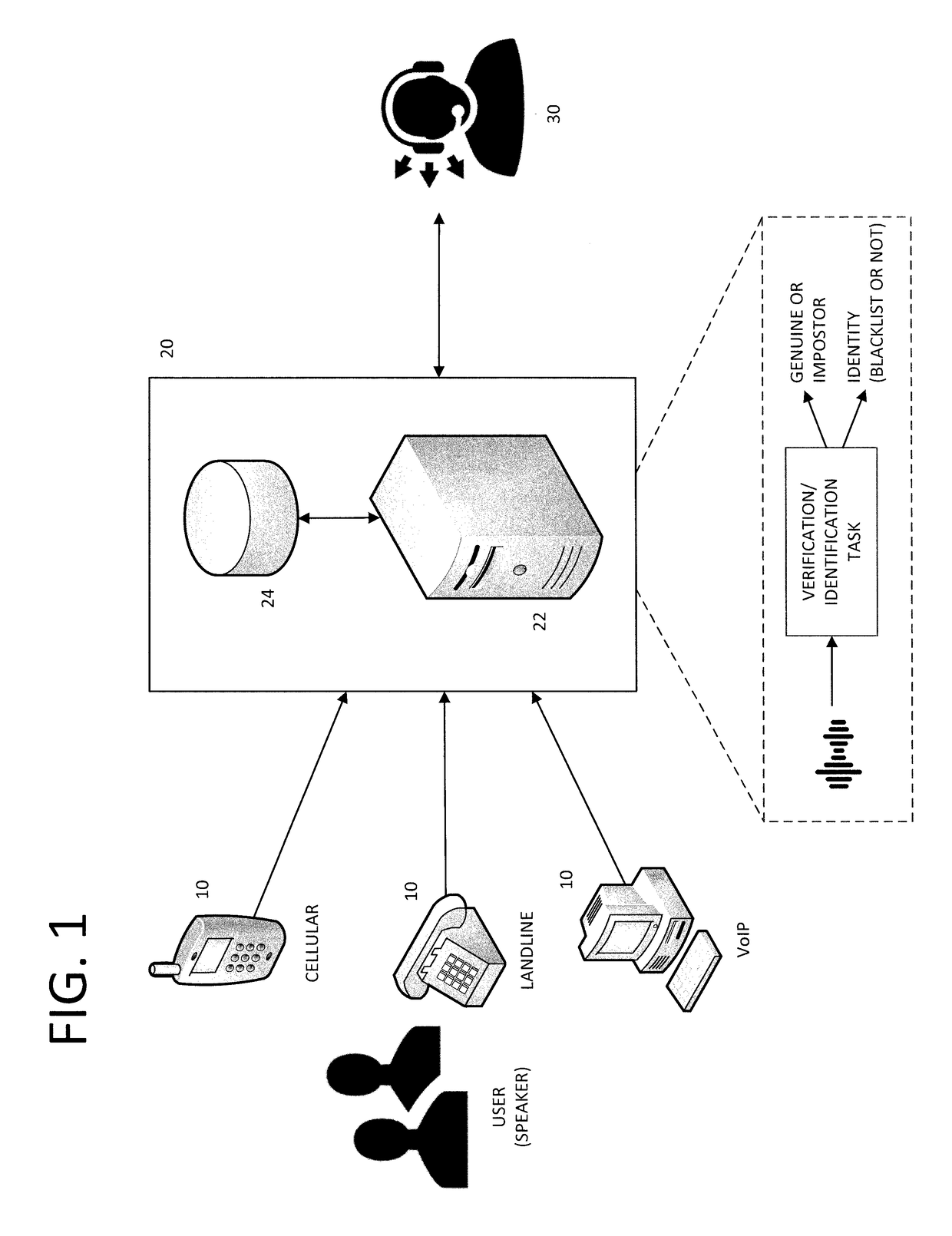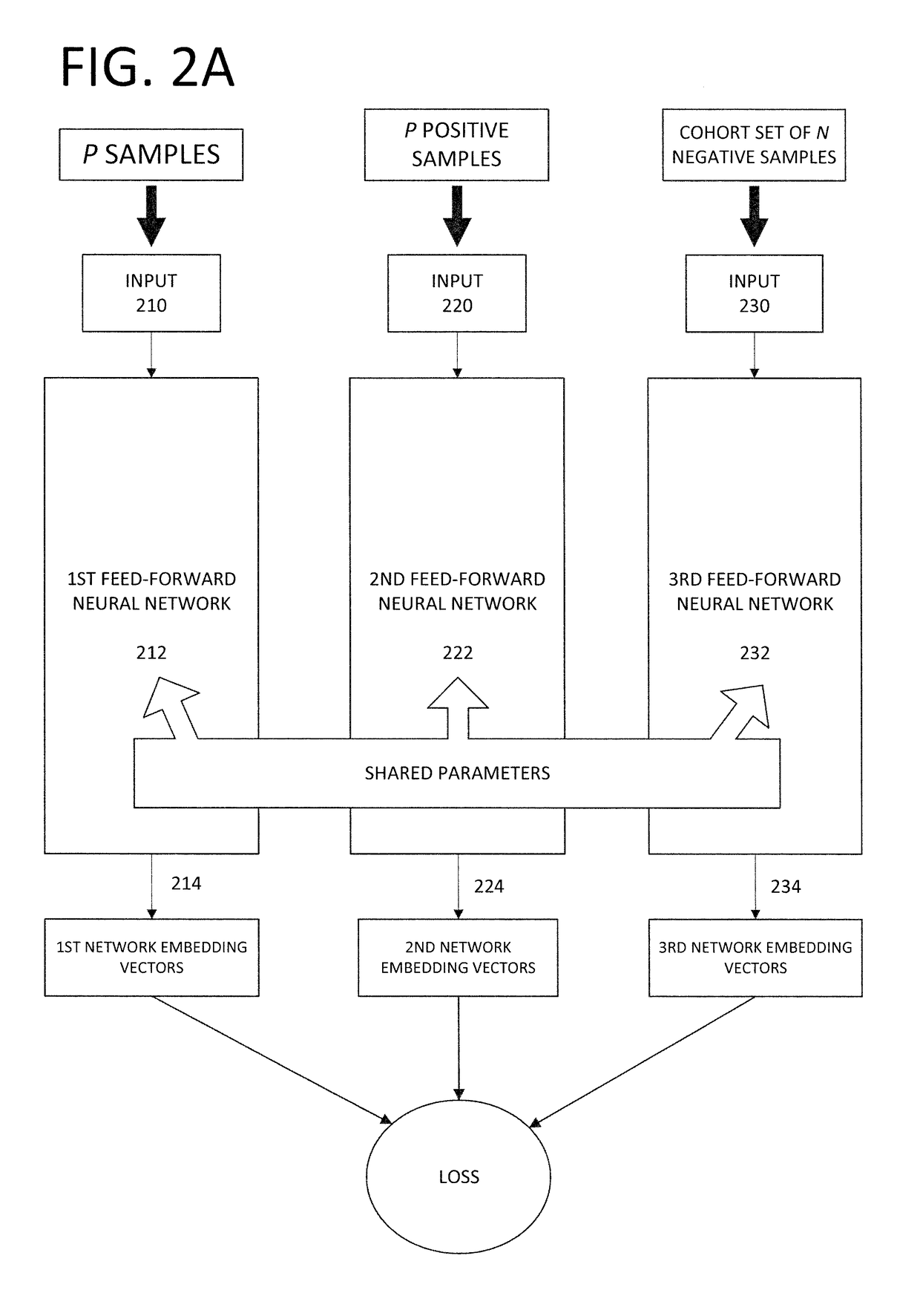End-to-end speaker recognition using deep neural network
a neural network and speaker technology, applied in the field of voice recognition, can solve problems such as difficult modeling complex structures in a feature space, and discover useful information
- Summary
- Abstract
- Description
- Claims
- Application Information
AI Technical Summary
Benefits of technology
Problems solved by technology
Method used
Image
Examples
second alternative embodiment
[0084]It is noted that, in the description of the training process illustrated in FIG. 6, a specific loss function was described above in connection with Equations (1)-(8). However, it is not a requirement that the DNN be trained according to the particular loss function, which was described above in connection with FIG. 6. In an alternative exemplary embodiment, for instance, a different loss function that is directly related to the Equal Error Rate (EER) metric may be used to train the DNN.
[0085]The EER metric is typically used to assess the accuracy of a speaker recognition system. In speaker recognition and other biometric systems, an EER is used to pre-determine threshold values for equalizing the false acceptance rate and false rejection rate. The EER is derived under the assumption that the distribution of positive recognition scores (indicating a match) and negative recognition scores (indicating a mismatch) are Gaussian, and can be expressed by the following equation:
EER=12...
PUM
 Login to View More
Login to View More Abstract
Description
Claims
Application Information
 Login to View More
Login to View More - R&D
- Intellectual Property
- Life Sciences
- Materials
- Tech Scout
- Unparalleled Data Quality
- Higher Quality Content
- 60% Fewer Hallucinations
Browse by: Latest US Patents, China's latest patents, Technical Efficacy Thesaurus, Application Domain, Technology Topic, Popular Technical Reports.
© 2025 PatSnap. All rights reserved.Legal|Privacy policy|Modern Slavery Act Transparency Statement|Sitemap|About US| Contact US: help@patsnap.com



